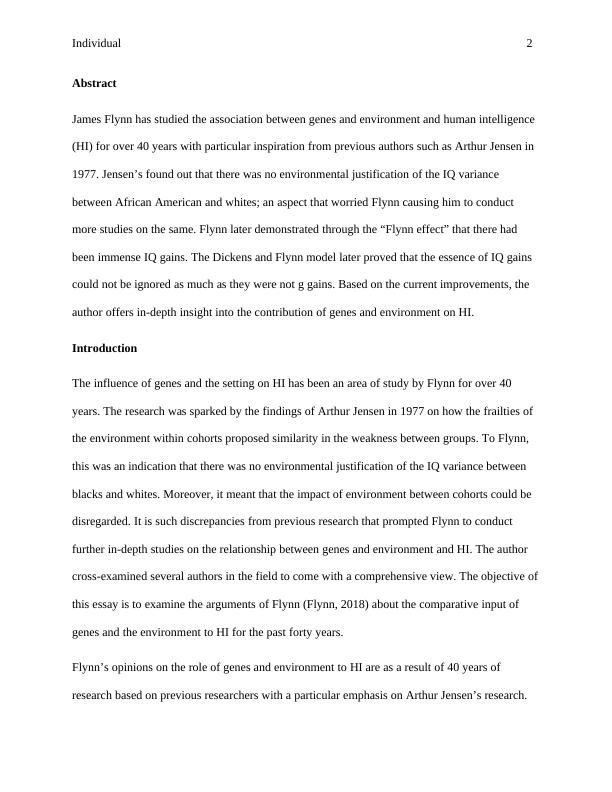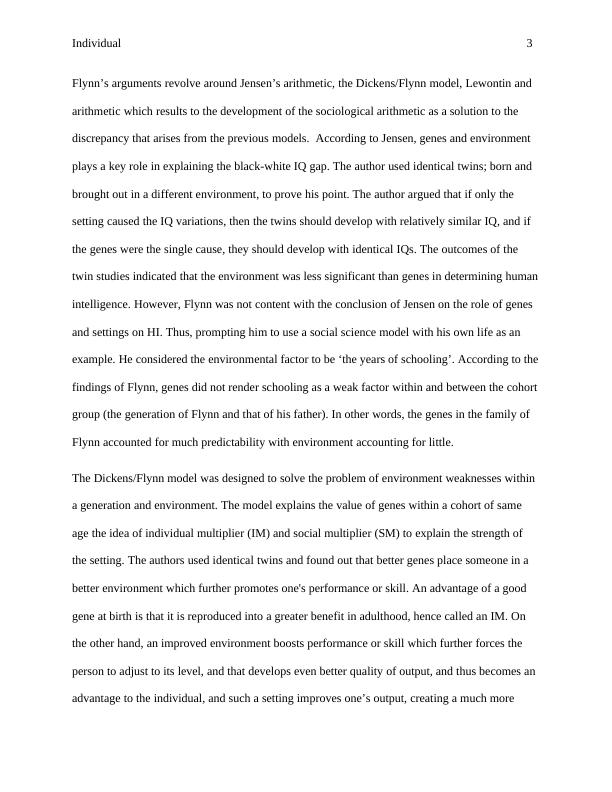Individual Differences
Write an essay evaluating Flynn's arguments on the relative contributions of genes and environment to human intelligence.
7 Pages2004 Words68 Views
Added on 2022-12-29
About This Document
This essay examines the arguments of James Flynn about the contribution of genes and environment to human intelligence (HI) over the past forty years. Flynn's research is based on previous studies, particularly Arthur Jensen's research. The essay discusses Flynn's opinions, the Dickens/Flynn model, and the sociological arithmetic proposed by Flynn to address the discrepancies in previous models. It also explores the impact of genes and environment on HI and the variations in IQ between different cohorts.
Individual Differences
Write an essay evaluating Flynn's arguments on the relative contributions of genes and environment to human intelligence.
Added on 2022-12-29
ShareRelated Documents
End of preview
Want to access all the pages? Upload your documents or become a member.



